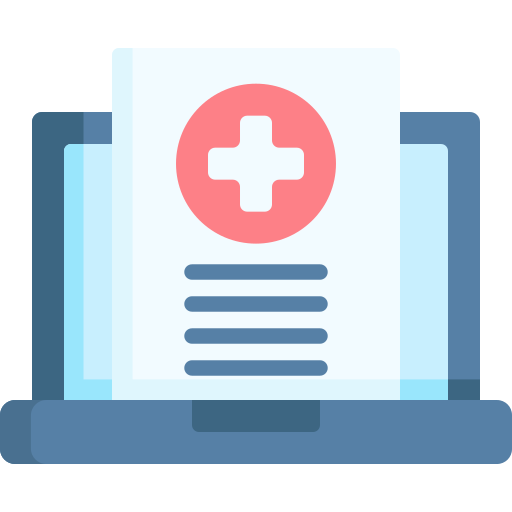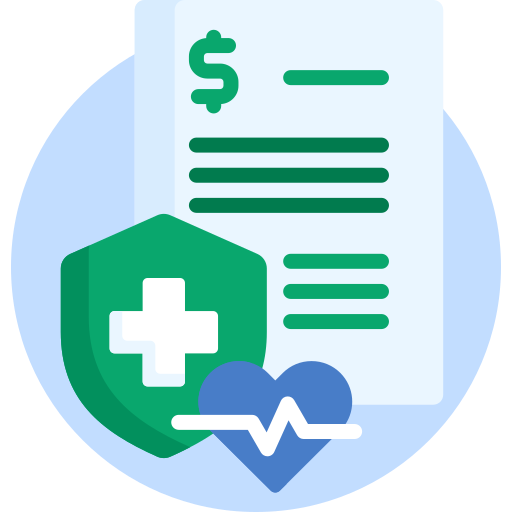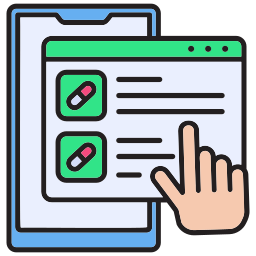Healthcare technology is experiencing a paradigm shift with the emergence of Anthropic's Model Context Protocol (MCP). But what exactly is Model Context Protocol, and why is it particularly transformative for healthcare applications? Let's break it down in simple terms before exploring its application in healthcare.
Understanding Model Context Protocol: The Three Stages of LLM Evolution
As Professor Ross Mike explains in his clear breakdown, LLMs have evolved through three distinct stages:

1. Basic LLMs: Limited to Text Generation
LLMs can only predict the next word in a sequence in their basic form. While impressive for writing content or answering knowledge-based questions, they cannot perform meaningful actions in the real world.
"LLMs by themselves are incapable of doing anything meaningful... the only thing an LLM in its current state is good at is predicting the next text."
This limitation severely restricts their utility in healthcare, where accessing patient records, processing medical data, and taking clinical actions are essential capabilities.
2. LLMs + Tools: Adding Capabilities Through Direct Integration
The second evolution came when developers connected LLMs to external tools and APIs. This approach allows LLMs to search the internet, access databases, process emails, and perform specific tasks:
"The next evolution was when developers figured out how to take LLMs and combine them with tools, and you can think of a tool like an API, for example."
This might mean connecting an LLM to a patient database, medication reference service, or clinical guidelines repository in healthcare. However, this approach comes with significant challenges:
"It gets frustrating when you want to build an assistant that does multiple things... You become someone who glues different tools to these LLMs, and it can get very frustrating and cumbersome."
This becomes particularly problematic for healthcare applications, where multiple data sources and tools are essential. Maintaining connections between an LLM and various healthcare systems (EHRs, pharmacy databases, lab systems, etc.) quickly becomes a nightmare of integration points.
3. LLMs + MCP: Standardized Protocol for Seamless Integration
Model Context Protocol represents the third evolution - a standardized protocol that sits between the LLM and external services:
"MCP you can consider it to be a layer between your LLM and the services and the tools, and this layer translates all those different languages into a unified language that makes complete sense to the LLM."
Rather than directly connecting an LLM to dozens of healthcare systems with different APIs and data formats, Model Context Protocol provides a standardized way for these interactions to occur. This is revolutionary for healthcare, where system interoperability has been a persistent challenge.
The MCP Architecture: Understanding the Components
To implement MCP in healthcare contexts, it's important to understand its core components:

1. MCP Client
The MCP client is the interface that connects directly to the LLM. Examples include Anthropic's Claude or other implementing platforms like Tempo, Windsurf, and Cursor.
In healthcare, this could be the provider-facing interface where clinicians interact with the AI assistant or a patient-facing application for medication management or care guidance.
2. MCP Protocol
The protocol is the standardized set of conventions governing how information is exchanged between the client and server. This ensures consistent communication regardless of which tools or services are being used.
3. MCP Server
The MCP server translates between the MCP protocol and the actual services or tools:
"The service provider now manages the MCP server. As the development team or tool provider, we are responsible for setting up and configuring the MCP server to ensure the client has full access and functionality."
For healthcare companies, this means developing MCP servers that expose their FHIR APIs, clinical tools, and medical databases in a standardized way.
4. Services
The actual healthcare services - FHIR databases, clinical decision support tools, medication interaction checkers, etc. - connect to the MCP server.
MCP in Healthcare: A Perfect Match for FHIR
The healthcare industry has invested heavily in FHIR (Fast Healthcare Interoperability Resources) as the standard for electronically exchanging healthcare information. FHIR's structured, consistent data model with well-defined resources (Patient, Medication, Condition, etc.) aligns perfectly with MCP's standardized approach.

Why MCP + FHIR is Revolutionary for Healthcare Chatbots?
- Standardized Access to Clinical Data: Model Context Protocol provides a consistent way for LLMs to access FHIR resources across different EHR systems and healthcare platforms.
- Tool Integration Without the Headache: Healthcare requires numerous specialized tools (medication interaction checkers, clinical guideline engines, etc.) that can now be integrated through the standardized MCP approach.
- Maintenance Simplified: When APIs change (as they frequently do in healthcare), only the MCP server needs updating, not the entire application.
- Cross-System Communication: Healthcare data lives in many systems - Model Context Protocol enables seamless communication across these boundaries.
Implementing an MCP-Based Healthcare Chatbot: Practical Example
Let's explore how we might implement an MCP-based healthcare chatbot that interacts with FHIR resources. I'll show the key components using code examples.
1. Setting Up the MCP Client for a Clinical Assistant
First, let's define our MCP client that will interact with Claude:
// mcp-client.ts
import { Claude } from '@anthropic/sdk';
import { MCPClient } from '@anthropic/mcp-sdk';
// Initialize Claude client
const claude = new Claude({
apiKey: process.env.CLAUDE_API_KEY,
model: 'claude-3-5-sonnet'
});
// Create MCP client
const mcpClient = new MCPClient({
claude,
tools: [
{
name: 'fhir_service',
description: 'Access patient medical records via FHIR API',
serverUrl: 'https://mcp.health-provider.com/fhir-service'
},
{
name: 'medication_analyzer',
description: 'Analyze medication interactions and dosing',
serverUrl: 'https://mcp.health-provider.com/med-analyzer'
},
{
name: 'clinical_guidelines',
description: 'Access evidence-based clinical guidelines',
serverUrl: 'https://mcp.guidelines.org/mcp-server'
}
]
});
// Handle provider query
export async function handleProviderQuery(query: string, patientContext?: string) {
const response = await mcpClient.generateContent({
prompt: `You are a clinical assistant helping a healthcare provider.
${patientContext ? `Current patient context: ${patientContext}` : ''}
Provider query: ${query}`,
maxTokens: 2000,
temperature: 0.3
});
return response;
}
2. Implementing an MCP Server for FHIR Resources
Now, let's implement an MCP server that exposes FHIR resources:
// fhir-mcp-server.ts
import express from 'express';
import { FHIRClient } from '@medplum/fhirclient';
const app = express();
app.use(express.json());
// Initialize FHIR client
const fhirClient = new FHIRClient({
baseUrl: process.env.FHIR_API_URL,
auth: {
type: 'client_credentials',
clientId: process.env.FHIR_CLIENT_ID,
clientSecret: process.env.FHIR_CLIENT_SECRET
}
});
// MCP server endpoint for patient search
app.post('/mcp/patient-search', async (req, res) => {
try {
const { name, identifier } = req.body.params;
// Construct FHIR search parameters
const searchParams = new URLSearchParams();
if (name) searchParams.append('name', name);
if (identifier) searchParams.append('identifier', identifier);
// Execute FHIR query
const result = await fhirClient.search('Patient', searchParams);
// Return standardized MCP response
res.json({
status: 'success',
data: result.entry?.map(entry => entry.resource) || [],
metadata: {
total: result.total || 0,
source: 'FHIR Patient Resource'
}
});
} catch (error) {
res.status(500).json({
status: 'error',
message: error.message
});
}
});
// MCP server endpoint for medication data
app.post('/mcp/patient-medications', async (req, res) => {
try {
const { patientId } = req.body.params;
// Get MedicationRequests for patient
const medications = await fhirClient.search('MedicationRequest', new URLSearchParams({
patient: patientId,
status: 'active,completed'
}));
res.json({
status: 'success',
data: medications.entry?.map(entry => entry.resource) || [],
metadata: {
total: medications.total || 0,
source: 'FHIR MedicationRequest Resource'
}
});
} catch (error) {
res.status(500).json({
status: 'error',
message: error.message
});
}
});
// Start server
app.listen(3000, () => {
console.log('FHIR MCP Server running on port 3000');
}
3. Implementing a Specialized Clinical Tool as an MCP Server
Let's also implement a medication analysis tool that follows the Model Context Protocol.
// medication-analyzer-mcp-server.ts
import express from 'express';
import { DrugInteractionService } from './services/drug-interaction';
import { DosageAnalyzer } from './services/dosage-analyzer';
const app = express();
app.use(express.json());
// Initialize clinical services
const interactionService = new DrugInteractionService();
const dosageAnalyzer = new DosageAnalyzer();
// MCP server endpoint for medication interaction analysis
app.post('/mcp/analyze-interactions', async (req, res) => {
try {
const { medications } = req.body.params;
// Extract medication codes
const medicationCodes = medications.map(med => {
return med.medicationCodeableConcept?.coding?.[0]?.code || '';
}).filter(code => code);
// Check for interactions
const interactions = await interactionService.checkInteractions(medicationCodes);
res.json({
status: 'success',
data: {
interactions: interactions,
severity: interactions.map(i => i.severity),
recommendations: interactions.map(i => i.recommendation)
}
});
} catch (error) {
res.status(500).json({
status: 'error',
message: error.message
});
}
});
// MCP server endpoint for dosage analysis
app.post('/mcp/analyze-dosage', async (req, res) => {
try {
const { medications, patientDetails } = req.body.params;
// Analyze dosages considering patient factors
const dosageAnalysis = await dosageAnalyzer.analyzeDosages(
medications,
patientDetails
);
res.json({
status: 'success',
data: {
dosageIssues: dosageAnalysis.issues,
recommendations: dosageAnalysis.recommendations
}
});
} catch (error) {
res.status(500).json({
status: 'error',
message: error.message
});
}
});
// Start server
app.listen(3001, () => {
console.log('Medication Analyzer MCP Server running on port 3001');
});
How It All Works Together: A Clinical Scenario
Let's walk through how this MCP architecture handles a real clinical scenario:
1️⃣ Provider Query: A physician asks, "Check for potential medication interactions for patient John Smith, recently prescribed lisinopril."
2️⃣ MCP Client Processing:
- The MCP client (built with Claude) receives the query
- It recognizes that this requires both patient data and medication analysis
- The client formulates standardized MCP requests to the appropriate servers
3️⃣ FHIR MCP Server Actions:
- Receives request to find patient "John Smith"
- Executes FHIR search query
- Finds the patient and returns standardized patient data
- Receives request for the patient's medications
- Returns medication data in standardized format
4️⃣ Medication Analyzer MCP Server Actions:
- Receives medication list from FHIR data
- Performs interaction analysis
- Returns standardized results about potential interactions
5️⃣ Response Generation:
- The MCP client combines all this information
- Claude generates a comprehensive, clinically relevant response
- The physician receives a clear summary of potential interactions
The beauty of this approach is that each component focuses on what it does best, with the MCP protocol providing standardized communication throughout.
Advantages of MCP for Healthcare Applications
The advantages of implementing MCP in healthcare contexts are significant:
For Provider-Facing Applications
- Seamless EHR Integration: Connect to multiple EHR systems through standardized MCP servers rather than custom integrations for each.
- Clinical Decision Support: Easily incorporate specialized clinical tools for medication review, treatment planning, and diagnostic assistance.
- Future-Proof Architecture: As healthcare APIs evolve, only the MCP servers need updating, not the entire application.
- Cross-System Intelligence: Draw insights from multiple health systems and data sources with consistent access patterns.
For Patient-Facing Applications
- Medication Management: Connect to pharmacy systems, interaction checkers, and adherence tools through a unified interface.
- Care Plan Support: Integration with multiple providers' systems to create comprehensive care guidance.
- Health Education: Personalize education by accessing patient-specific data and relevant clinical guidelines.
- Multi-Provider Support: Help patients navigate care across different health systems and providers.
Implementation Considerations and Challenges
While Model Context Protocol offers significant advantages, there are important considerations for healthcare implementations:
1. Security and Privacy
Healthcare applications must maintain strict compliance with HIPAA and other regulations:
- Ensure all MCP servers implement proper authentication and authorization
- Encrypt all data in transit between components
- Implement audit logging for all data access
- Consider data residency requirements for healthcare information
2. Clinical Validation
Healthcare tools require clinical validation:
- Involve clinical experts in the development and testing of MCP servers
- Implement validation logic to catch clinically inappropriate recommendations
- Consider regulatory requirements for clinical decision support tools
3. Technical Challenges
Healthcare implementations should:
- Establish clear DevOps processes for managing MCP server deployments
- Implement robust monitoring and alerting for MCP components
- Create fallback mechanisms when MCP servers are unavailable
The Future of MCP in Healthcare
MCP is still evolving, but its potential for healthcare is enormous. Some future directions include:
- Multi-Modal Healthcare Data: Extending MCP to handle medical imaging, biosensor data, and other healthcare-specific formats.
- Federated Healthcare Systems: Using MCP to bridge private healthcare networks while maintaining data sovereignty.
- Clinical Workflow Integration: Moving beyond information retrieval to active participation in clinical workflows through standardized MCP actions.
- Regulatory Frameworks: As healthcare AI becomes more regulated, MCP could provide standardized ways to implement safeguards and oversight.
Conclusion
Model Context Protocol represents a significant advancement for healthcare AI applications. MCP addresses the fundamental challenge of healthcare system interoperability that has plagued the industry for decades by providing a standardized way for LLMs to access healthcare data and tools.
Model Context Protocol offers a more sustainable, scalable approach for developers building healthcare chatbots and clinical assistants than direct tool integration. The alignment with FHIR standards makes it particularly well-suited for healthcare implementations, where structured data and reliable access patterns are essential.
As the MCP ecosystem matures, we can expect to see increasingly sophisticated healthcare applications seamlessly integrating with the complex web of systems comprising modern healthcare IT infrastructure. The future of healthcare AI isn't just about more innovative models – it's about smarter ways for those models to interact with the healthcare ecosystem.
Are you implementing MCP in your healthcare applications? Contact us to discuss this further.
- What is Model Context Protocol?
The Model Context Protocol (MCP) is a standardized framework used in AI and machine learning to define, store, and manage the contextual information about a model throughout its lifecycle. This protocol ensures that the model's state, parameters, inputs, and outputs are clearly tracked and communicated between different stages of the model's execution, facilitating smoother transitions and consistent behavior across various platforms or tasks. It helps to keep the model adaptable and aligned with its environment by preserving essential context information for accurate predictions and interactions.
- What are the main components of the Model Context Protocol?
The main components of the Model Context Protocol include context management, model state tracking, and communication interfaces. Context management is responsible for recording and storing critical information about the model's environment, inputs, parameters, and outputs. Model state tracking ensures that the model's progression and learning states are preserved, enabling consistency across sessions. Lastly, communication interfaces allow the model to share its context with other systems or models, ensuring proper integration and adaptation across different platforms or tasks, making the protocol essential for AI systems' scalability and reliability.
- What is MCP in AI?
In AI, MCP stands for Model Context Protocol, a crucial mechanism for managing and maintaining the context in which a model operates. It allows for the model’s parameters, training data, environment, and other contextual elements to be consistently updated and accessed during its lifecycle. This ensures that the AI model can make informed decisions based on its current understanding and state, making it more adaptable and effective when deployed in dynamic or complex environments. The goal of MCP in AI is to enhance model performance and ensure consistent behavior as the system evolves.
- What is MCP in Machine Learning?
In machine learning, MCP (Model Context Protocol) refers to the structured approach used to handle and track the contextual information associated with a model, such as training data, parameters, hyperparameters, and environmental conditions. This protocol ensures that the model remains consistent and capable of performing optimally by preserving the state of the model throughout various phases of training and testing. By enabling the management of context across different stages of machine learning processes, MCP ensures the model can be reused, modified, or deployed without losing crucial information or introducing inconsistencies.

Pravin Uttarwar, CTO of Mindbowser
As the CTO of Mindbowser, a healthcare-focused software development company, I am dedicated to delivering cutting-edge digital solutions that transform patient care and operational efficiency. With over 16 years of experience and as an MIT alumnus, I specialize in healthcare interoperability, FHIR-compliant systems, and AI-powered platforms, crafting scalable products and architectures tailored to the unique needs of healthcare providers and enterprises.
I have spearheaded the development of over 100 products and platforms, guiding them from concept to full-fledged solutions. My expertise extends to scaling remote tech teams, driving EHR integrations, and building secure, cloud-native healthcare solutions. By shaping technology visions and roadmaps, I help clients achieve long-term growth and success in the rapidly evolving healthcare landscape.
HealthConnect CoPilot enabled us to access real-time patient health data through integration with Apple HealthKit, enhancing care delivery while maintaining HIPAA compliance. This led to personalized care and improved outcomes for patients.

AI-enhanced Obstetrics Clinical Decision Support Platform
HealthConnect CoPilot's integration with Epic's Hyperspace has transformed our workflow. Automated post-delivery examinations and HL7 protocol use ensure accurate updates to Epic. Their expertise empowers informed decision-making in childbirth

Top Provider for Customized Healthcare Solutions
HealthConnect CoPilot's helped us to integrate with leading tracking devices such as Apple Watches and Fitbit. This integration enables effortless syncing of health data, providing users with real-time insights displayed directly on our flagship products: smart mirrors and digital calendars.

A Provider of Customizable Display Solutions
Post a comment Cancel reply
Related Posts
Navigating the Future of Healthcare Integration with SMART on FHIR Apps
SMART on FHIR enables apps to plug directly into EHR systems like Epic EHR, Cerner…
TEFCA in Healthcare: A Complete Guide
Healthcare has long struggled with fragmented data systems. Patient records are often locked within isolated…
Healthcare Integration: The Understanding & Its Impact in Healthcare
Healthcare integration refers to connecting various systems, applications, and data sources within the healthcare ecosystem…
Value-based Care vs Fee-for-Service
Healthcare payment systems can feel a bit like deciding between paying for each item on…
Integrating FHIR and Genomics: How AI is Shaping the Future of Medicine
AI is transforming the way medicine approaches personalized healthcare, particularly through genomics. By analyzing vast…
How HealthConnect CoPilot Ensures Patient Data Security and Privacy
In the complex world of healthcare, managing patient data is like walking a tightrope—one wrong…









